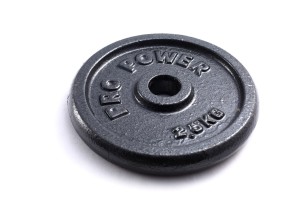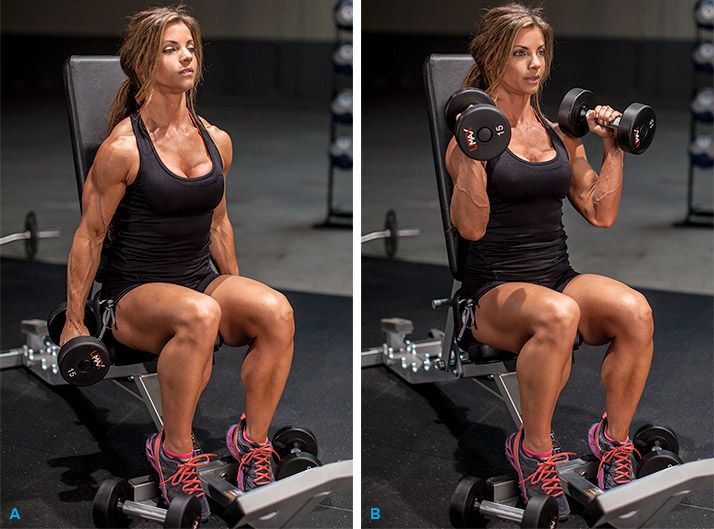When the last gram of fuel paste from the fondue burner has gone out, the raclette has finally stopped glowing and the remains of the crispy Christmas goose have disappeared into the depths of the black bin, we know: Christmas is over. But how do we get all the “Christmas gains” (attention: pun!) Off our hips again? A classic first world problem. So: How can we lose weight quickly after Christmas?
In this article we want to clarify exactly this question. To do this, we not only look at the causes of uncontrolled weight gain (don’t worry, we’re not going back to the historical reasons of Christmas), but also the physiological energy requirements of your body and the theoretical bases with which you can boost your fat burning again .

Why do we gain so much weight over Christmas?
In view of the countless (excess) calories that we encounter every day in liquid and solid form from mulled wine, marzipan, chocolate, lard cakes, roasted nuts, baked apples, Christmas roasts and Christmas stollen, this question is probably answered by itself.
For all those who are still rather critical of excessive food consumption as the main factor for obesity, we are of course happy to discuss the exact circumstances of the unwanted fat storage. Alternatively, you could take a walk through the Christmas market with a nutritionist and watch exactly how much his sweats change depending on the food available. But that doesn’t get us anywhere.
Perhaps you have already noticed that your diet has a significant influence on your training goal. With the training goal muscle building, which in terms of nutrition is primarily implemented through a positive nitrogen balance (a lot of protein) and a calorie surplus , you can look forward to the whole Christmas dinner completely relaxed. A carbohydrate-rich pack of roasted almonds doesn’t interfere with your muscle building nutrition plan, just as little as the marzipan tree trunk in the afternoon. The muscle building type acts freely between the holidays according to the motto christmasistnureinmalimjahr …
With the fat burning training goal the Christmas story takes a dramatic turn. Here, every piece of lard cake topples its own energy balance with unpleasant consequences: Not only weight loss , i.e. the burning of depot fat, comes to a standstill, but – and that is usually much more dramatic – Your own body weight begins to increase and provides the year-end spurt on the index of your body scales. Why is that?
Let’s take a closer look at the energy balance : Your energy balance is the balance between the energy consumed with food and the energy “used”, e.g. comes about through physical activity, breathing or your training.
Energy balance = energy intake (food) – energy consumption (physical activity)
If you consume more energy than you use every day, we speak of a positive energy balance or a calorie surplus . If you consume less energy than you use, we speak of a negative energy balance or a calorie deficit .
A excess calories causes your body to store the excess calories (energy) in the form of depot fat or glycogen (carbohydrates) in the body and muscles. However, fat is the only long-term energy store that your body can use. A calorie deficit reverses the previous case. Now the energy stored in muscles and fat is broken down and burned so that the energy consumption of your muscles and your metabolism can be covered even in the critical phases of an energy deficiency.
This makes it clear: The first stage goal after the holidays is the targeted switch from calorie surplus to calorie deficit (if you want to lose weight after Christmas). And I’m assuming that you want to lose weight. Otherwise, why should you read this article? For our colleagues who were expecting a tough muscle building article here, I would like to refer to our muscle building guide. You are much better off there!
Why targeted fat burning has more to do with bacon on the raclette

You can only achieve the fat burning training goal with a calorie deficit or a negative energy balance. Your neon-colored fitness bracelet, the tracking app for your smartphone or the XXL pack of whey protein that Santa Claus kindly put under the long-dried Nordmann fir tree will help you lose weight after Christmas limited. You can only achieve (effective) fat burning by combining three elementary factors:
- The nutritional change from Schmalzkuchen and Co. to a training goal-oriented diet with a corresponding macronutrient distribution
- The bringing about an adequate calorie deficit through this diet
- The targeted combination of strength training and cardio training , so that the oxidation of (stored) fatty acids is increased and your body “burns” more depot fat
Even if the so-called fat burning takes place in parallel to all other metabolic processes in your body, the amount of fat oxidized in “everyday life” is not enough to significantly reduce your body fat percentage (BFA) and thus the fatty one Get rid of Christmas goose.
In order to break down the depot fat, which a few days ago was integrated into the table decoration in the form of marzipan and chocolate, you have to force your body to burn the stored fat reserves . That this only works if you do not permanently supply it with much faster available energy through diet (that means carbohydrates in particular), is obvious.
That means for you: If you want to lose weight, you can’t avoid a calorie deficit . It doesn’t matter whether you achieve this through diet, your training or a combination of both factors. It is just exorbitantly more difficult to achieve a negative energy balance through an average workout if you are not currently a stage leader in the Tour de France or tackling a marathon across the Arctic. This can be regulated much more efficiently via (d) a sustainable handle in the refrigerator.
How high does a calorie deficit have to be for visible fat burning?
Let’s put it this way: The question of the “optimal calorie deficit” turns out to be more difficult than the search for the Holy Grail and is comparable to the never-ending discussion about the “perfect training plan”. There is no such thing as an optimal calorie deficit. There is only one certain area in which you can personally get a little closer to your training goal in a very individual way.
For this reason, it is also difficult to quantify an exact calorie deficit that will lead to success in all athletes. Rather, the “trial and error” method is appropriate here, with which every athlete repeatedly controls his training results and weight loss successes through targeted documentation and long-term optimization (constant adjustment of nutrition and training). Losing weight quickly after Christmas therefore requires a little more investment!
That means: A male athlete who has been training for many years, scratches the 2m mark and weighs in three figures, has completely different requirements for a calorie deficit than a thin young woman who struggles with difficulty reaches a body weight of 50kg.

How do I determine my energy and calorie requirements?
The exact determination of an athlete’s energy needs is probably even more complicated than a political rapprochement between North and South Korea. Why is that?
The individual energy requirement of an athlete depends on a large number of incongruent factors that are almost impossible to bring to “the same denominator”. So that you can get an impression of it and understand why we are talking about the bush, here are just a few of the factors that significantly influence your energy requirements:
• Age
• Gender
• Muscle mass (energy consumption during rest and exercise phases) • Type of food
• Occupational activity
• Physical activity in everyday life
• Training (type of sport, training frequency, intensity, training condition) • Climate and altitude conditions
• Injuries and illnesses
In summary, this means: You cannot determine your exact energy requirements in a meaningful way.
This is where our just mentioned “Trial-and-Error” method comes into play again. The exact determination of your energy requirements is unnecessary because
- You have an explicit training goal (fat burning)
- You now know that you have to somehow reduce your calorie intake
- You can optically and physically (body fat scale) determine whether you are also making progress in training with the calorie adjustment you have made
That describes the T-A-E method. So you determine a gross calorie deficit, ideally complete 2-4 intensive training units (cardio training or muscle building training) per week and check at intervals of about 14 days whether the selected calorie deficit leads to consistent fat burning results and you lose body fat.
You can use our self-explanatory calorie calculator to determine a (rough!) guide value for your daily energy requirement, on the basis of which you can plan your calorie deficit.
For women and men, a calorie deficit of 1/5 to 1/4 of the daily calorie requirement has generally been found in practice. proven to be effective. The calorie deficit should by no means be too high so that the sports medicine recommended macronutrient distribution is not undershot. the intake of essential fatty acids or amino acids is limited to such an extent that vital metabolic processes can only take place to a limited extent.
Our normal, vegetarian and vegan diet plans for burning fat offer targeted assistance and relieve you of a lot of work in the conception of the optimal nutrient composition. So you can fully focus on your training!
More tips for losing weight after Christmas
Of course, diet is only one medal side in losing weight. Effective fat burning through controlled diet alone can be a tough endeavor. Therefore, you should always combine intense muscle building training with cardio training to maximize the effects of burning fat when losing weight after Christmas. Note, however, that the onset of fat burning depends on a few factors that you have probably always underestimated.
Unfortunately, it is not enough to stand on the cross trainer for 15-20 minutes a few hours after Christmas dinner. You only burn calories in a targeted manner in your mind. You can find out more about this in our article on burning fat during cardio. In addition to building muscle in men and women, the topic of energy supply and fat burning is an elementary topic in our Hypertrophy Guide . There we also dealt extensively with the optimal macronutrient distributions for athletes. Maybe this year you will forego the senseless bang and do something good for your body!


